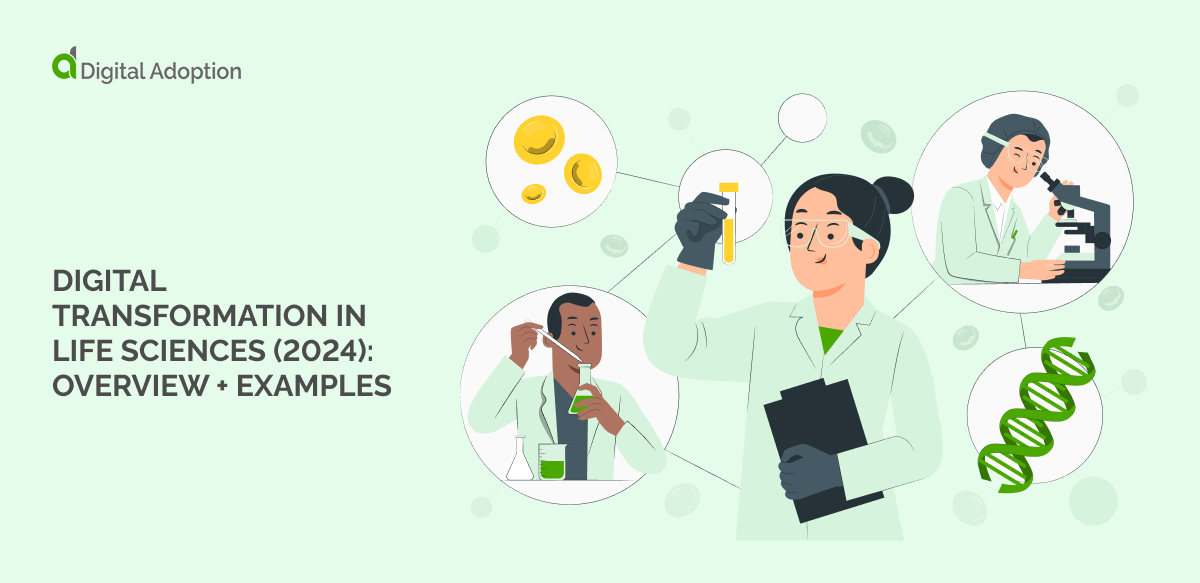The process of digital adoption is often a difficult one.
After all, only 16% of users are early adopters of technology. And according to the same studies, at least half of your customers are going to be slower than average to get to grips with new digital tools.
So it’s important to understand what users go through when new technology is introduced to them. We’re going to look at this in detail and also provide some tips on how to facilitate the process of digital adoption for your customers.
The 4 stage process of digital adoption
Phase 1: Resistance
New technology is often perceived as a threat or a nuisance.
The process of digital adoption can trigger negative feelings for users, such as:
- Frustration
- Fear
- Insecurity
All these feelings lead to resistance. Taking a change management approach to technology implementation can be beneficial in tackling this common and perfectly natural human resistance to the unfamiliar.
Phase 2: Onboarding
It’s important to get onboarding right first time — 9 out of 10 apps are used only once, so an effective onboarding process is critical for the success of your digital product.
It must be simple and non-threatening — if the process is complicated, users will experience frustration and probably abandon your tool entirely.
Phase 3: Usage
When users are successfully onboarded and operating a new tool, there is cause for celebration. They’re now using the technology. But this is no time for complacency. In fact, this is where the majority of enterprises get it wrong.
Simply using technology is not enough for maximum ROI.
You spend millions on a new tool for your customers but they’re only using one of its functions or only completing one step in the process — right there, that describes the difference between usage and adoption.
Phase: Adoption
According to WalkMe’s Complete Glossary of Digital Adoption, true adoption is when digital tools are being used as intended, and to their fullest extent.
// Digital adoption occurs when a business invests in new technology, adopts a digital mindset, and evolves processes so users can maximize proficiency on a given software or app.
It’s several steps beyond usage, which merely describes the cursory experimentation with or basic operation of technology.
6 tips for facilitating the process of digital adoption
1. Get ready for some goal setting
It is said that Arnold Schwarzenneger is an avid goal setter. And while you may not share his goals, it cannot be denied that the former professional bodybuilder from Austria has achieved a lot in his lifetime.
The power of goal setting is in defining what you want to achieve. Simply by doing this, you fixate on your aim, it keeps you on track, so that everything you do is a small step in the right direction.
Define exactly what you want to achieve with the process of digital adoption, write it down, make yourself and others accountable. Set yourself up for success.
2. Encourage feedback
The process of digital adoption does not occur in a vacuum. End users are involved; they’re central, in fact. So invite them to contribute to the planning process.
What are their pain points and goals when it comes to digital? As far as providing the ideal digital products and platforms to your customers goes, it’s essential to know what they want — and what they don’t want.
The more you engage customers in the lead up to a major digital change, the more receptive they’re likely to be to it.
3. Create a program of works
As we’ve seen from the first part of this article, digital adoption does not happen overnight. Often it occurs in stages, so it’s helpful to map these to a timeline. It will also enable you to break down your ultimate goal into smaller, step-by-step goals.
Don’t expect too much too soon. But don’t create too lengthy a timeline either. The longer digital adoption takes, the further behind the pace of digital evolution you fall. And the more frustrated your users will get.
4. Be agile and flexible
The quicker enterprises can produce, adapt, and react, the better it will fare in the digital age. As a result, new business models have arisen to allow teams to move with more speed.
Agile is an approach to software development and project management that emphasizes:
- Reactivity and adaptability, instead of excessive planning
- Collaboration, over hierarchy
- People, processes, and tools
Lean is a similar approach that stresses customer-centricity and speed. The goal is to release new product versions quickly, which are based on solid data and customer feedback.
The process of digital adoption needs this sort of agility and flexibility.
5. Use a DAP
One of the key principles of the digital age is, why struggle to do something when technology can do it — or help you to do it — better.
The DAP, or Digital Adoption Platform, is a software layer that can be applied to any digital tool, platform, app, or system. It integrates with that system and helps users to adopt it fully.
It’s probably the single most important factor in facilitating and accelerating the process of digital adoption.
6. Lead by example
Lack of senior support is one of the major barriers to successful digital change for today’s enterprises.
Leaders and managers must lead by example when it comes to digital adoption. They should be the first to jump aboard the digital train, to promote and embody its benefits.
We hope these tips will help you nurture your customers through the process of digital adoption and give your organization a successful future.













